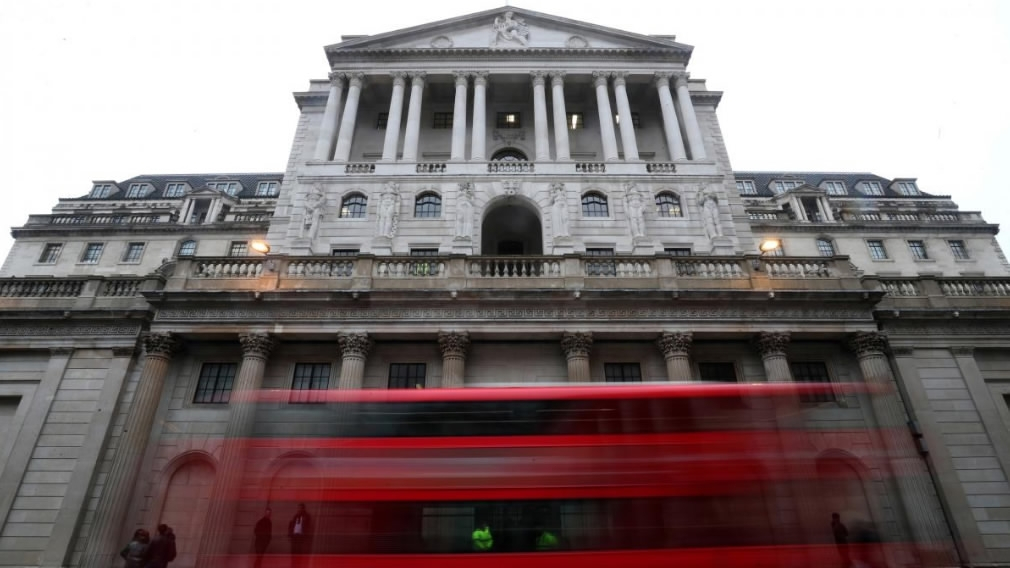
Editor's note: Willem H. Buiter is a former chief economist at Citigroup and a visiting professor at Columbia University. The article reflects the author's opinions, and not necessarily the views of CGTN.
Modern Monetary Theory (MMT) offers a dangerous half-truth that has become particularly seductive now that governments are desperate for tools with which to keep their economies afloat. A recent statement by MMT proponent Stephanie Kelton to the Financial Times is a case in point. Referring to the United Kingdom's current Conservative government, she argues that, "They're going to have massive deficits. And it's fine."
The problem is that while this assessment is correct for now, it won't necessarily be correct in the future. Indeed, we should anticipate that the year following the end of the COVID-19 lockdown could be when MMT falls flat on its face – starting, perhaps, with a burst of inflation in the UK. But, even barring that specific outcome, policymakers are flirting with disaster if they accept MMT's main message, which can be paraphrased as: "Deficit, schmeficit. Just boost public spending or cut taxes, then monetize the resulting imbalance."
To be sure, some parts of MMT make sense. The theory views the treasury (or finance ministry) and the central bank as components of a single unit called the state. The treasury is the beneficial owner of the central bank (or, put another way, the central bank is the treasury's liquidity window), which implies that central-bank independence is an illusion, especially when it comes to its fiscal and quasi-fiscal operations.
MMT holds, correctly, that because the state can print currency or create commercial bank deposits with the central bank, it can issue base money at will. And because the monetary base is irredeemable, it is not in any meaningful sense a liability (even though it is certainly viewed as an asset by the holder). As long as the non-monetary debt issued by the state is denominated in domestic currency, sovereign default is a choice, not a matter of necessity, because debt servicing can always be funded (by creating money).

A view of London, UK, May 1, 2020. /AP
A view of London, UK, May 1, 2020. /AP
But if sovereign default is a choice, there are circumstances in which it might be chosen. If the deficit that needs to be monetized is large enough, and if the interest on the public debt accounts for a significant part of that deficit, the monetary financing required to maintain sovereign solvency might result in a politically unacceptable rate of inflation. In that case, the sovereign might opt for the "lesser evil": defaulting on its domestic-currency-denominated debt.
To get to the heart of the matter, forget about issues such as bond financing, and focus directly on how the state funds the deficit by creating money. Assume that public spending and tax revenues are fixed in real (inflation-adjusted) terms. The resulting real deficit will be equal to the increment in the real stock of base money that the private sector must be willing to absorb each period.
There are two "regimes" for base-money demand. The first is where many of the advanced economies now find themselves: in a liquidity trap at the effective lower bound (ELB) for the nominal policy rate. At the prevailing near-zero risk-free short-term nominal interest rate, the effective demand for real-money balances is infinitely elastic. In this case, it is proper for fiscal authorities to follow a simple dictum: when in doubt, shovel it out. "Helicopter money" – monetized increases in public spending or tax cuts – is an appropriate policy response under such extraordinary conditions. So long as interest rates are stuck at the ELB, cash disbursements will not be inflationary.
Yet one must remember that domestic or foreign developments affecting financial markets or the real economy can quickly eject a country from its ELB perch, landing it in what economists would call a normal monetary regime, where the policy rate is above the ELB. With Japan stuck at or near the ELB for the past 20 years, the concept of "normal" may require some rethinking. Nonetheless, it would be reckless to design policies on the assumption that the neutral interest rate (the interest rate that would prevail with the economy at full employment and inflation on target) will hover near zero for the foreseeable future.
In this second, normal scenario, there still would be no inflationary threat so long as the economy has excess capacity (idle resources). But when demand for the monetary base is constrained by interest rates and the level of economic activity (measured, say, by income or consumption), the unbridled monetization of state deficits eventually would eventually exhaust what slack there is, putting upward pressure on the rate of inflation.
At this point, no one can know whether the COVID-19 pandemic will have lasting effects on supply relative to demand. Although weak investment and strong precautionary saving are likely to depress neutral and market interest rates while the pandemic persists, we should be prepared for when social distancing becomes a thing of the past and supply chains are at least partly restored. Governments will have to adjust their fiscal position and its financing accordingly. MMT thus ignores the level of demand for base money at its peril.
Copyright: Project Syndicate, 2020.
(If you want to contribute and have specific expertise, please contact us at opinions@cgtn.com.)